A solid sphere has linear velocity v0=4m/s and angular velocity ω0=9 rad/s as shown . Ground on which it is moving , is smooth . It collides elastically with a rough wall of coefficient with a rough wall of coefficient of friction μ. Radius of the sphere is 1 m and mass is 2 kg.
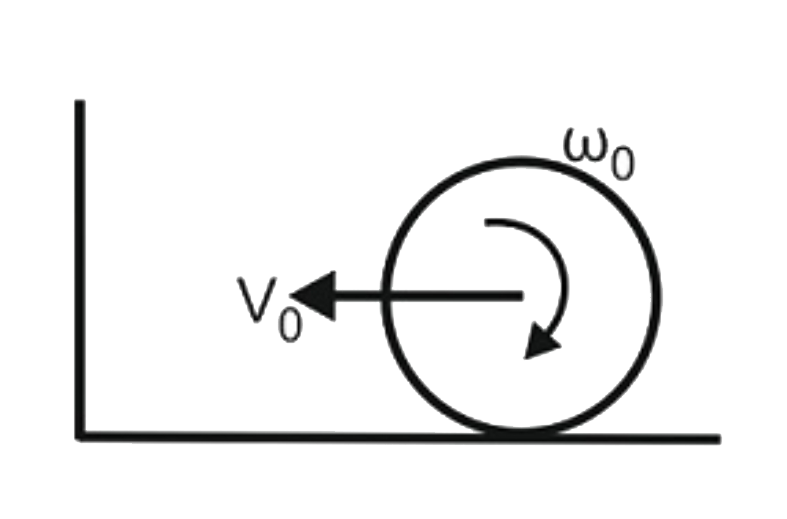
If the sphere after colliding with the wall rolls without slipping in opposite direction, the coefficient of friction μ is
12
23
13
14
The correct Answer is:D
Step by step video & image solution for A solid sphere has linear velocity v_0=4m//s and angular velocity omega_0=9 rad/s as shown . Ground on which it is moving , is smooth . It collides elastically with a rough wall of coefficient with a rough wall of coefficient of friction mu. Radius of the sphere is 1 m and mass is 2 kg. If the sphere after colliding with the wall rolls without slipping in opposite direction, the coefficient of friction mu is by Physics experts to help you in doubts & scoring excellent marks in Class 12 exams.
Updated on:21/07/2023Topper's Solved these Questions
Similar Questions
A solid sphere is rolling without slipping on rough ground as shown in figure. It collides elastically with another identical sphere at rest. There is no friction between the two spheres. Radius of each sphere is R and mass is m.

Linear velocity of first sphere after it again starts rolling without slipping is:
View SolutionA solid sphere is rolling without slipping on rough ground as shown in figure. It collides elastically with another identical sphere at rest. There is no friction between the two spheres. Radius of each sphere is R and mass is m.

What is the net angular impulse about centre of mass imparted to second sphere by the external forces?
View Solution
Knowledge Check
A solid sphere has linear velocity v0=4 m/s and angular velocity ω0=9 rad/s as shown. Ground on which it is moving , is smooth . It collides elastically with a rough wall of coefficient of friction μ . Radius of the sphere is 1m and mass is 2 kg .
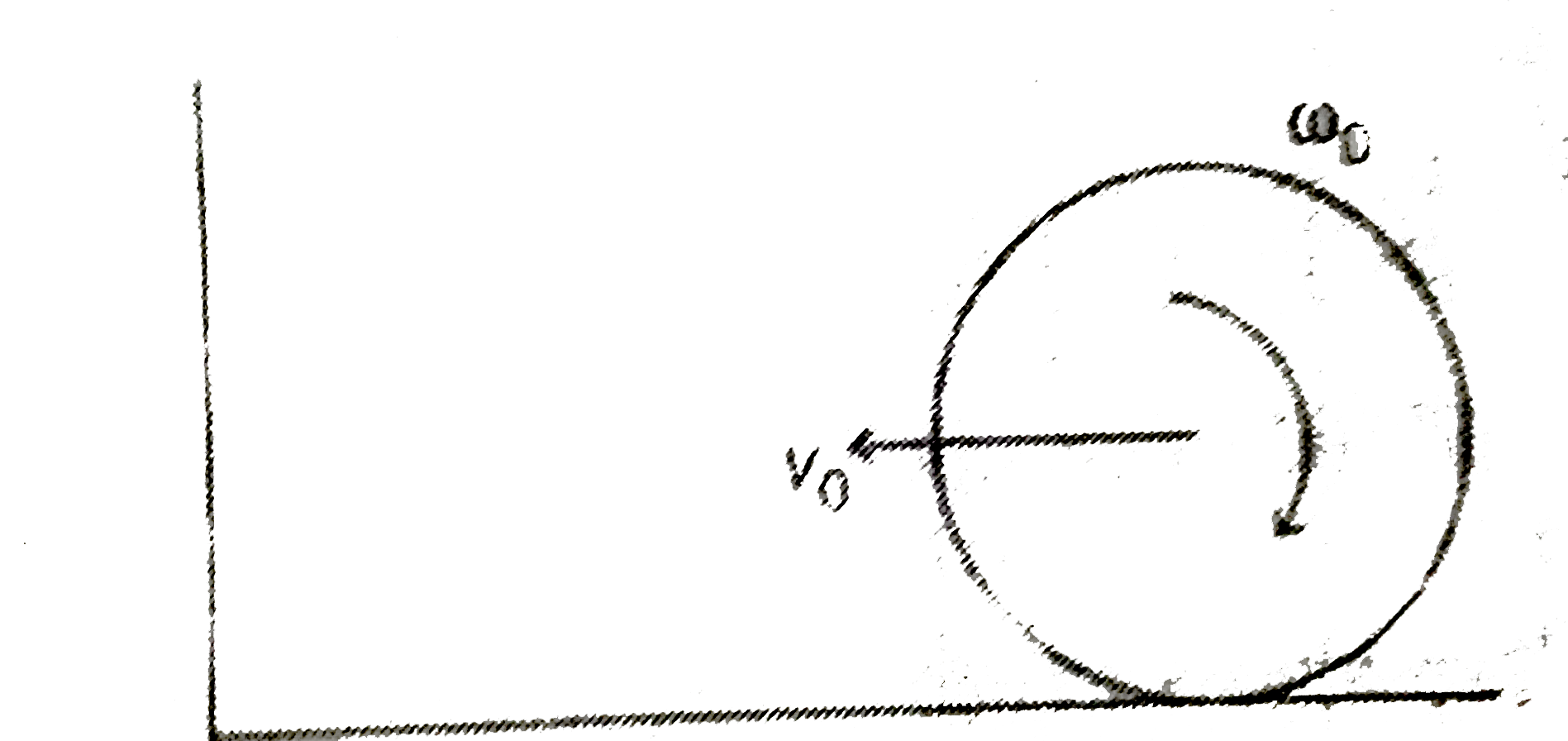
If the sphere after colliding with the wall rolls without slipping on opposite direction, then coefdicient of friction μ isA12B23C13D14A solid sphere has linear velocity v0=4 m/s and angular velocity ω0=9 rad/s as shown. Ground on which it is moving , is smooth . It collides elastically with a rough wall of coefficient of friction μ . Radius of the sphere is 1m and mass is 2 kg .
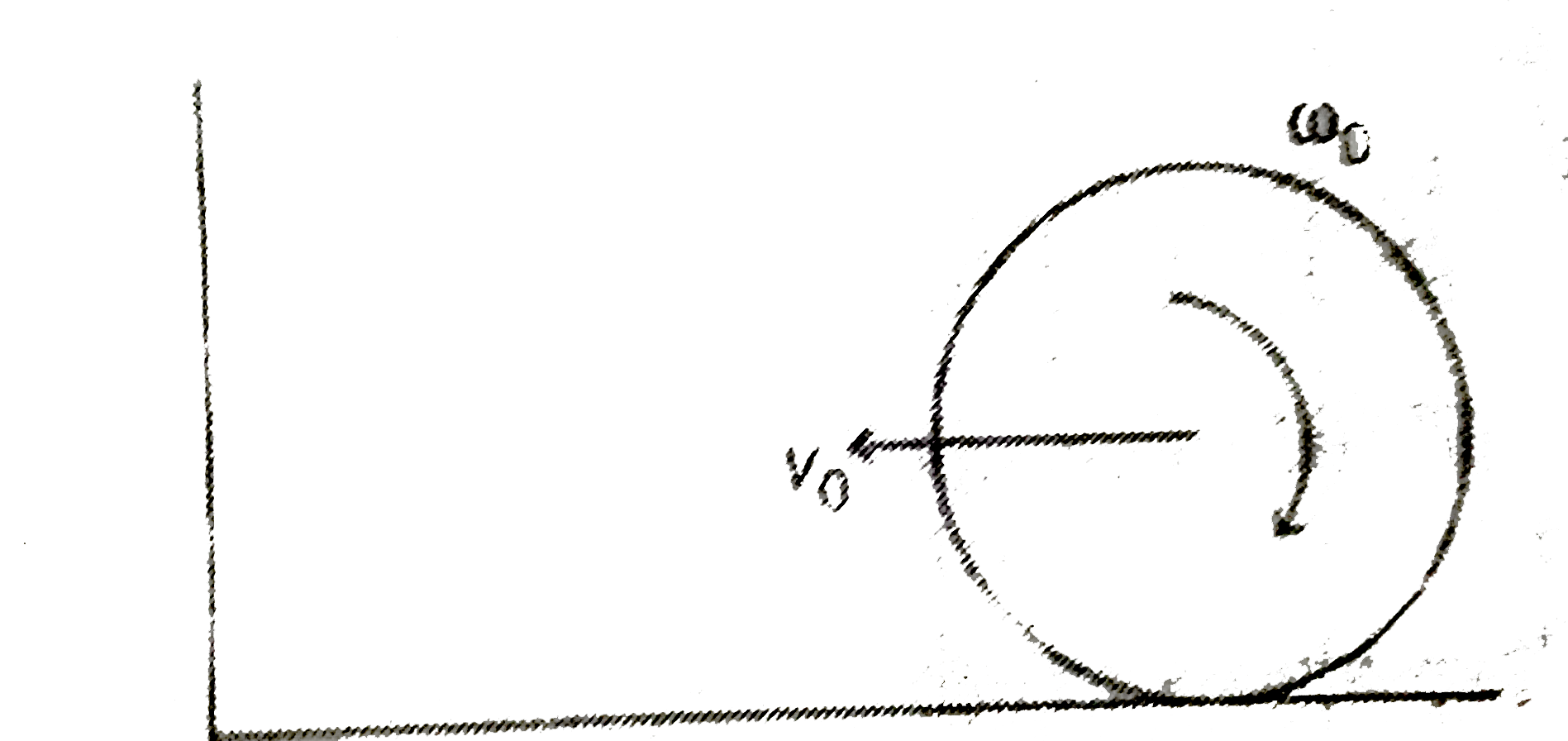
What is net linear impulse imparted by the wall on the sphere during impact ?A√32N−sB4√17N−sC4√5N−sD15√2N−sA solid sphere is rolling without slipping on rough ground as shown in figure. If collides elastically with an identical another sphere at rest. There is no friction between the two spheres . Radius of each sphere is R and mass is m.
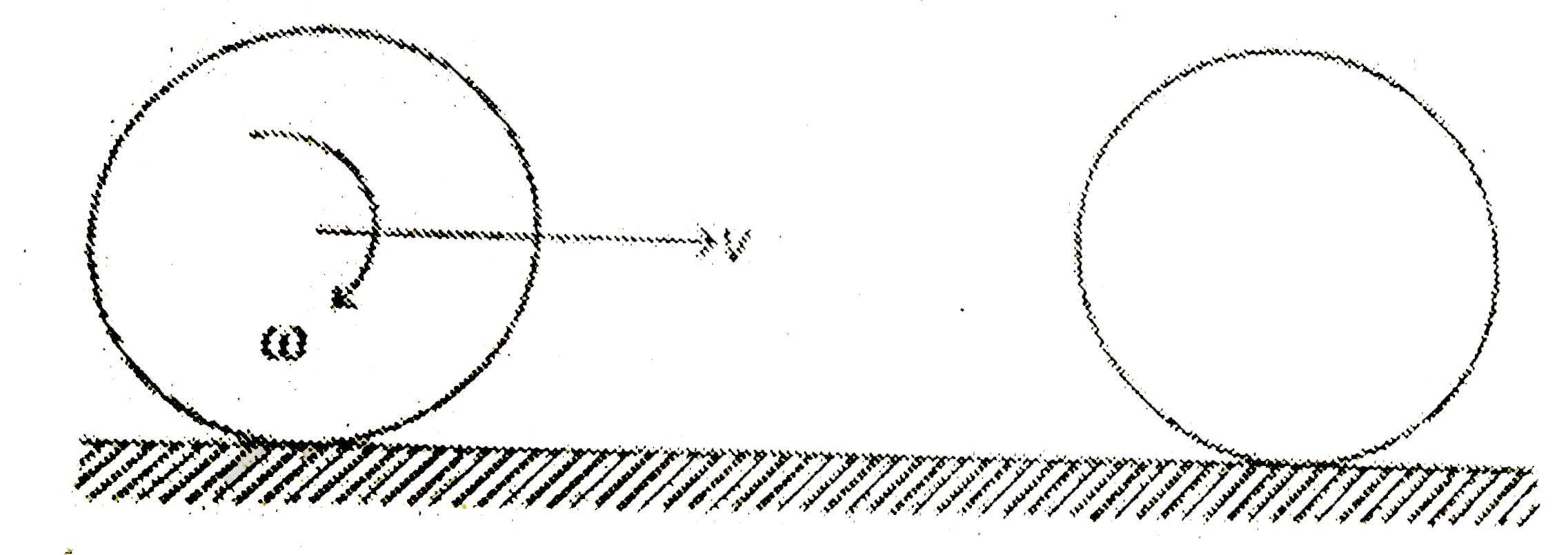
Linear velocity of first sphere after it again starts rolling without slipping isA25ωRB27ωRC710ωRD75ωR
A solid sphere with a velocity (of centre of mass) v and angular velocity ω is gently placed on a rough horizontal surface. The frictional force on the sphere :
View SolutionA sphere is moving on a smooth surface with linear speed v0 and angular velocity ω0. It finds a rough inclined surface and it starts climbing up:
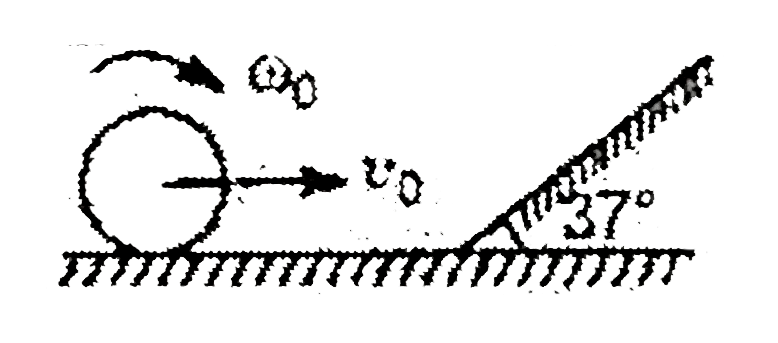
View SolutionA solid sphere is rolling without slipping on rough ground as shown in figure. If collides elastically with an identical another sphere at rest. There is no friction between the two spheres . Radius of each sphere is R and mass is m.
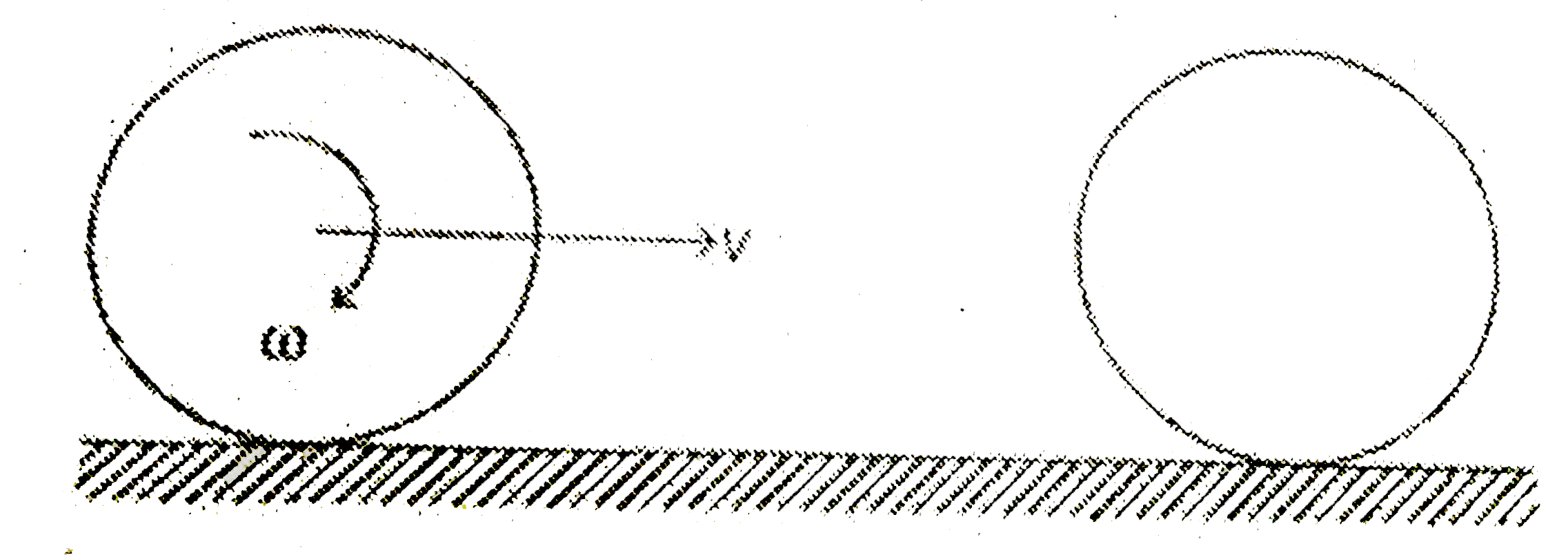
What is the net angular impulse imparted to second sphere by the external forces?
View Solution
A solid sphere is rolling purely on a rough horizontal surface (coefficient of kinetic friction =μ) with speed of centre =u. It collides in-elastically with a smooth vertical wall at a certain moment, the coefficient of restituting being 12. The sphere will begin pure rolling after a time.
View SolutionA solid sphere of mass m is lying at rest on a rough horizontal surface. The coefficient of friction between the ground and sphere is μ. The maximum value of F, so that the sphere will not slip, is equal to

View Solution
